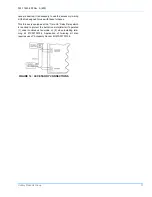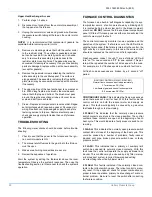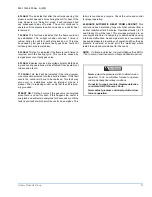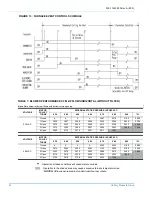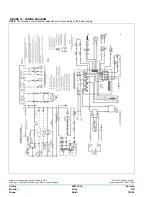
035-17443-000 Rev. A (800)
14
Unitary Products Group
START-UP AND ADJUSTMENTS
The initial start-up of the furnace requires the following addi-
tional procedures.
1.
When the gas supply is initially connected to the furnace,
the gas piping may be full of air. In order to purge this air,
it is recommended that the ground joint union be loos-
ened until the odor of gas is detected. When gas is
detected, immediately retighten the union and check for
leaks. Allow five minutes for any gas to dissipate before
continuing with the start-up procedure.
2.
All electrical connections made in the field and in the fac-
tory should be checked for proper tightness.
IGNITION SYSTEM CHECKOUT / ADJUSTMENT
1.
Turn the gas supply ON at external manual shutoff valve
and main gas valve.
2.
Set the thermostat above room temperature to call for
heat.
3.
System start-up will occur as follows:
a.
The venter motor will start and come up to speed.
Shortly after venter start-up, the hot surface igniter
will glow for about 17 seconds.
b.
After this warm-up cycle, the ignition module will
energize (open) the main gas valve for seven sec-
onds.
NOTE: Burner ignition may not be satisfactory on first start-
up due to residual air in gas line, or until gas pressure (mani-
fold) is adjusted. The control will make three (3) attempts to
light before locking out.
4.
With the furnace in operation, paint the pipe joints and
valve gasket lines with a rich soap and water solution.
Bubbles indicate a gas leak. Take appropriate steps to
stop the leaks. If the leak persists, replace the compo-
nent.
CHECKING GAS INPUT
1.
Turn off all other gas appliances connected to gas meter.
2.
With the furnace turned on, measure the time needed for
one revolution of the hand on the smallest dial on the
meter. A typical domestic gas meter usually has a 1/2 or
1 cubic foot test dial.
3.
Using the number of seconds for each revolution and the
size of the test dial increment, find the cubic feet of gas
consumed per hour from Table 5.
The accuracy of the gas meter is affected by both the
temperature and barometric pressure. Gas meter readings
should be accurate at 60º F and 30.0”h.g. barometric pres-
sure. However, temperatures higher than 60º F will cause the
meter to speed up resulting in a higher gas consumption
reading while lower temperatures will result in lower con-
sumption readings. For the barometric pressure, a value
greater than 30” h.g. will slow the meter while a value less
than 30” h.g. speeds up the meter. Depending on the condi-
tions, an error of
±
5% is not uncommon.
If weather conditions significantly differ from these values at
the time when the gas input rate is being determined, a gas
meter correction factor can be easily calculated to provide for
more accurate input rate adjustment. To calculate a meter
correction factor, use the following formula:
Using the information from above, calculate the gas input
rating by multiplying the number of cubic feet of gas
consumed per hour by the meter correction factor and by the
Btu content (heating value) of the gas in your particular
locality. Use 1 for a meter correction factor if it was not
calculated.
NOTE:Contact your gas company for the actual heating
value of the gas in your locality as it varies widely from city to
city.
Example - Checking Gas Input
It is found by measure that it takes 26 seconds for the hand
on the 1 cubic foot dial to make a revolution with only a
120,000 Btuh furnace running. Using this information, locate
26 seconds in the first column of Table 5 on page 15. Read
across to the column headed 1 cubic foot where you will see
that 138 cubic feet of gas per hour are consumed by the fur-
nace at that rate.
With the barometer at 28.9” and a 70º F temperature, the
correction factor will be .945. If the local gas heating value is
935 BTU per cubic foot the calculations will be as follows:
(Gas Rate) x (MCF) x (Heating Value) = Hourly Input Rate
(138ft3/hr)(0.945)(935 Btuh/ft3) = 121,933 Btuh
The calculated firing rate of 121,933 BTU per hour is within
the
+2% tolerance of our nominal 120,000 furnace.
If the actual input is not within
+2% of the furnace rating, with
allowance being made for the permissible range of the
regulator setting (0.3 inches W.C.), replace the orifice spuds
with spud of the proper size.
DO NOT
omit this test! NEVER use a flame to
check for gas leaks.
(Barometric Pressure) x 520
= Meter Correction Factor
(Tempe 460) x 30

















